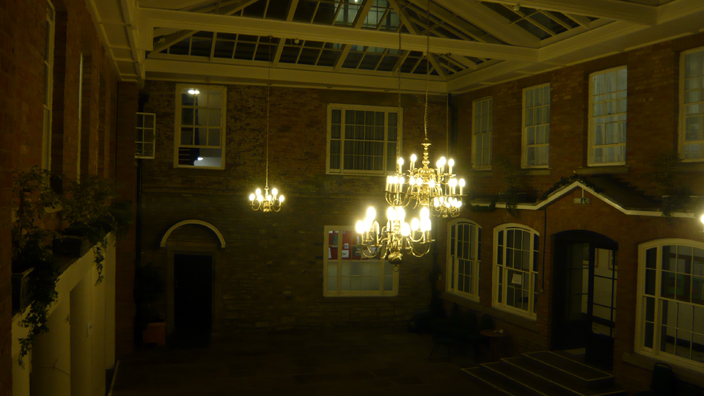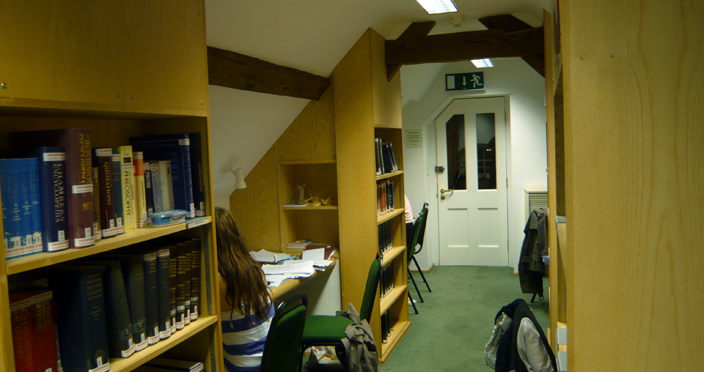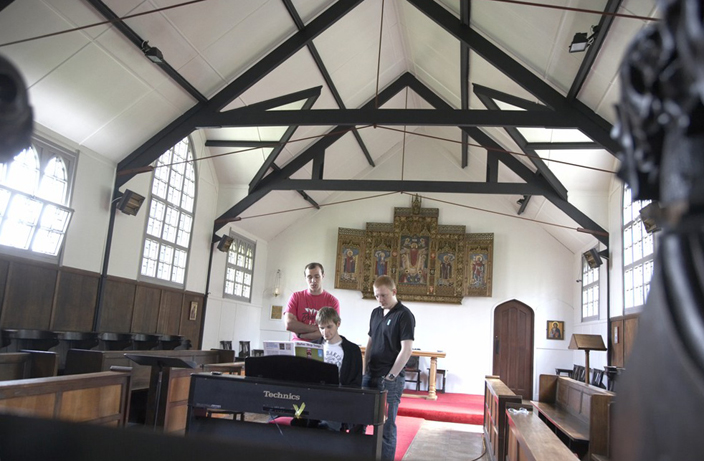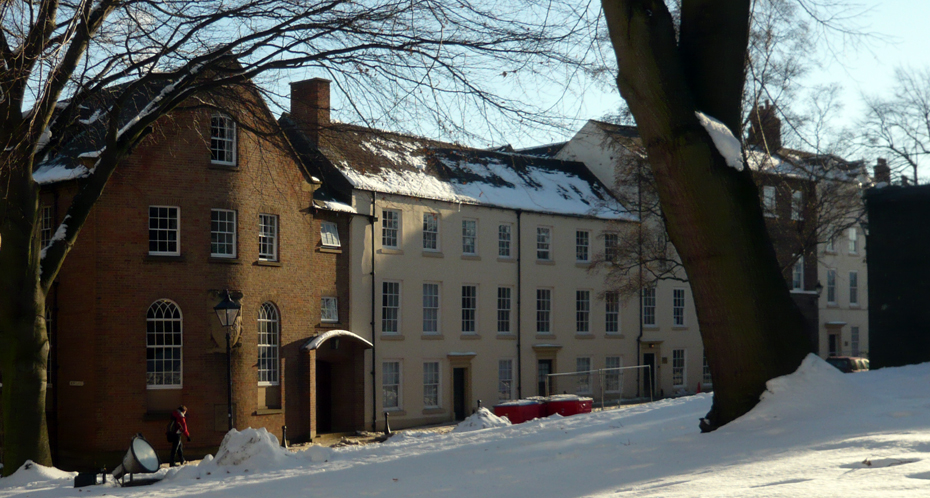St Chad’s College
St Chad's College was established as St Chad’s Hall in 1904 – a much awaited third college associated Durham University that, it was hoped, would lessen the rivalry between Hatfield and University Colleges.
St Chad's was founded as college for students intending to become clergymen. St Chad's became a college in 1919, and a constituent college of Durham University in 1923. Find out more about the college on the St Chad’s College website.
From South to North Bailey
In 1904, when the college first opened, it was located on South Bailey and had 19 students. As student numbers increased, more property was acquired. This was the case in 1925, when a property on North Bailey was purchased, and became the cornerstone around which the college has expanded.

St Chad's College is sometimes described by its members as small but perfectly formed - not unlike this snowman made by a St Chad's student out of the snow on the top of her porch on North Bailey!

The courtyard at St Chad's College, recently roofed with a glazed canopy that has made it a very well-used space.
200 Years of Architecture
Many of the buildings that form the heart of St Chad's College date from the 18th century. However, like other colleges on the bailey, St Chad's has also added new structures as needs dictate, managing to successfully marry the old and the new.
Among the college's architectural projects was the construction of the courtyard and neo-classical style hall in 1961. These were designed by Francis Johnson, a renowned architect of his time.
He is an exemplar of regionalism in architecture, understanding local history and traditions and reinterpreting them, while establishing a team of local craftsmen whose careers were substantially sustained by his patronage."
Alan Powers, on Francis Johnson, in the Spectator, August 18, 2001.
Many of Chad's projects have been clever ways of making better use of the existing space. For example, the quad was covered with a glass canopy in 2002, and the attics converted into additional college library rooms in 2006.

One of the St Chad's College Libraries, this one a recent conversion of the college attics.
Two Wooden Chapels
St Chad's first chapel was constructed in 1908 in the back garden of the first building acquired by the institution on South Bailey. When this grew too small, another, much larger, wooden chapel was built in 1928 in the back garden of the College's newly acquired property on North Bailey. This was intended as a temporary structure, and in 1932, the vice-principal of the College wrote:
... though still intended as only a temporary chapel, it is beautifully fitted up. Some day, when the permanent chapel is built, this, and a good deal of other furnishings can easily be transferred to the new building."
C.E. Whiting, The University of Durham, 1832-1932, p 173.
It is still the college chapel until today!

Interior view of St Chad's College Chapel, a 'temporary' building that has lasted for over 80 years, probably because it serves its function more than adequately.

